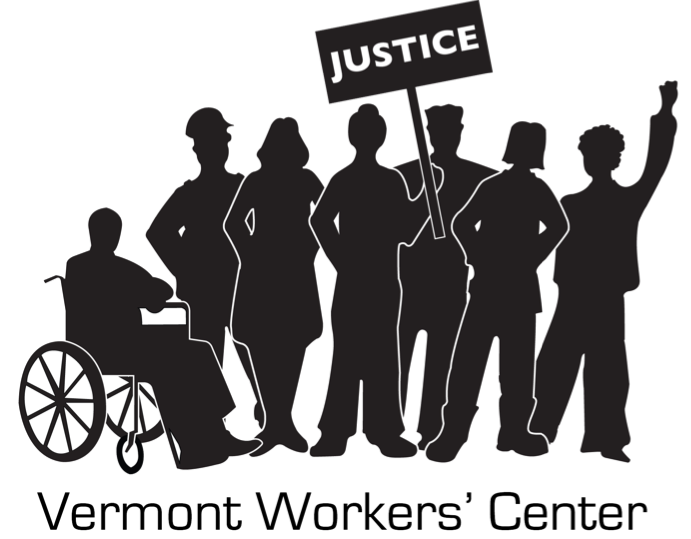From Livable Wage March and Rally, April 12, 2003
By Cindy Bubrouski
Hello! I’m Cindy Bubrouski. I’m an Instructional Assistant at Montpelier High School and have worked in that district for six years. I am also the president and chief negotiator of our VTNEA local, the Montpelier Educational Support Staff Association.
Instructional Assistants (or paraprofessionals) perform a wide variety of educational support services, from providing individual and small group instruction, to personal care. Every day, we do our best to educate students who are cognitively, physically, emotionally, or behaviorally challenged. Many of us are trained in facilitative communication, or have received specialized training to teach reading and writing. Many of us assist classroom teachers, and many of us provide direct instruction. All of us know how challenging our jobs are.
Historically, school districts have seen fit to devalue our work. For too long we have been an invisible workforce, the “orphans” of the school districts. Paraprofessionals across the state have been caught up in a web of low wages, and nonexistent or unaffordable healthcare benefits. We have seen our job responsibilities continue to grow, but not our wages and benefits.
Most school districts still offer starting wages more than $3.00 an hour BELOW the State of Vermont’s Joint Fiscal Office’s newest 2003 Livable Wage figure of $11.58 an hour. Keep in mind, that figure represents a single person working a full-year, and receiving employer- assisted health benefits. Most paras are not offered affordable health benefits, and are forced to rely on Vermont’s public assistance services. This is a disgrace, and a slap in the face to hardworking, dedicated educators. Who ends up paying for the benefits that school districts withhold from their paraprofessionals? We all do!
A 1995 Occupational Wages report, from the Central Vermont Chamber of Commerce, illustrates how paraprofessional hourly wages have not kept pace with inflation. The average wage for a “teacher’s aide” in 1995 was $8.60. That was almost 8 years ago! Now I ask you, how many of your school districts still pay their paras that $8.60 (or less) as a starting wage? It’s shameful! Paraprofessionals deserve a livable wage that provides for the basic necessities!
What can we do? Friends, first of all, if your district’s paras aren’t organized, form an association and get on board with VTNEA! It is time to head to the collective bargaining table with your school board! If you are already organized, remember this above all else when you begin bargaining, START WITH THE LIVABLE WAGE AS YOUR BASE! $11.58! Know that what you settle for will not only effect your district’s paraprofessionals, but will reverberate with every paraprofessional statewide. Stay strong. Begin and continue Livable Wage campaigns in your districts. Support one another. We are all in this together. As long as one paraprofessional earns a poverty wage, we are ALL the poorer for it! Vermont’s school support staff deserve a respectable, livable wage!
Thank you.
Cindy Bubrouski is president of the Montpelier Educational Support Staff Association
